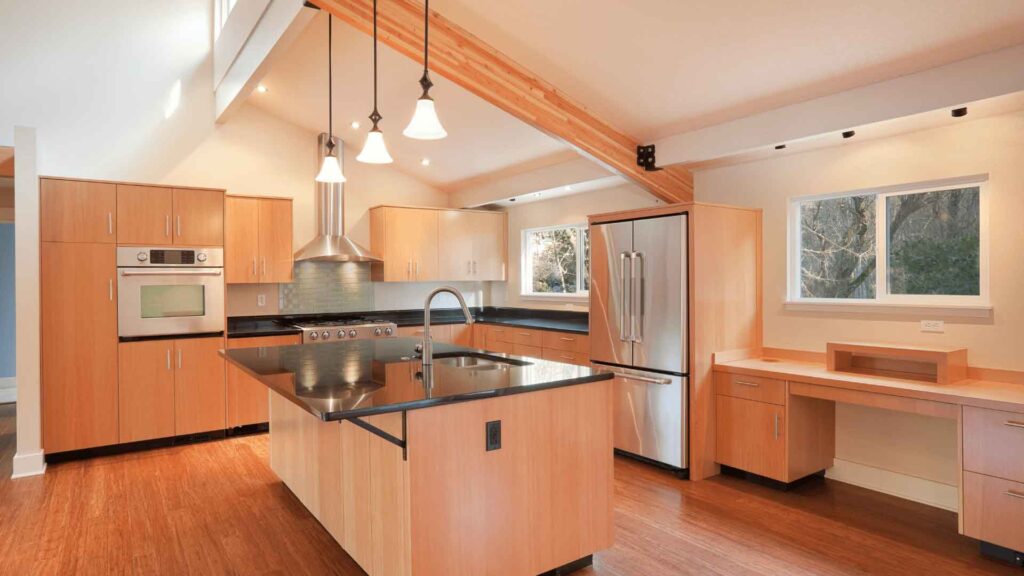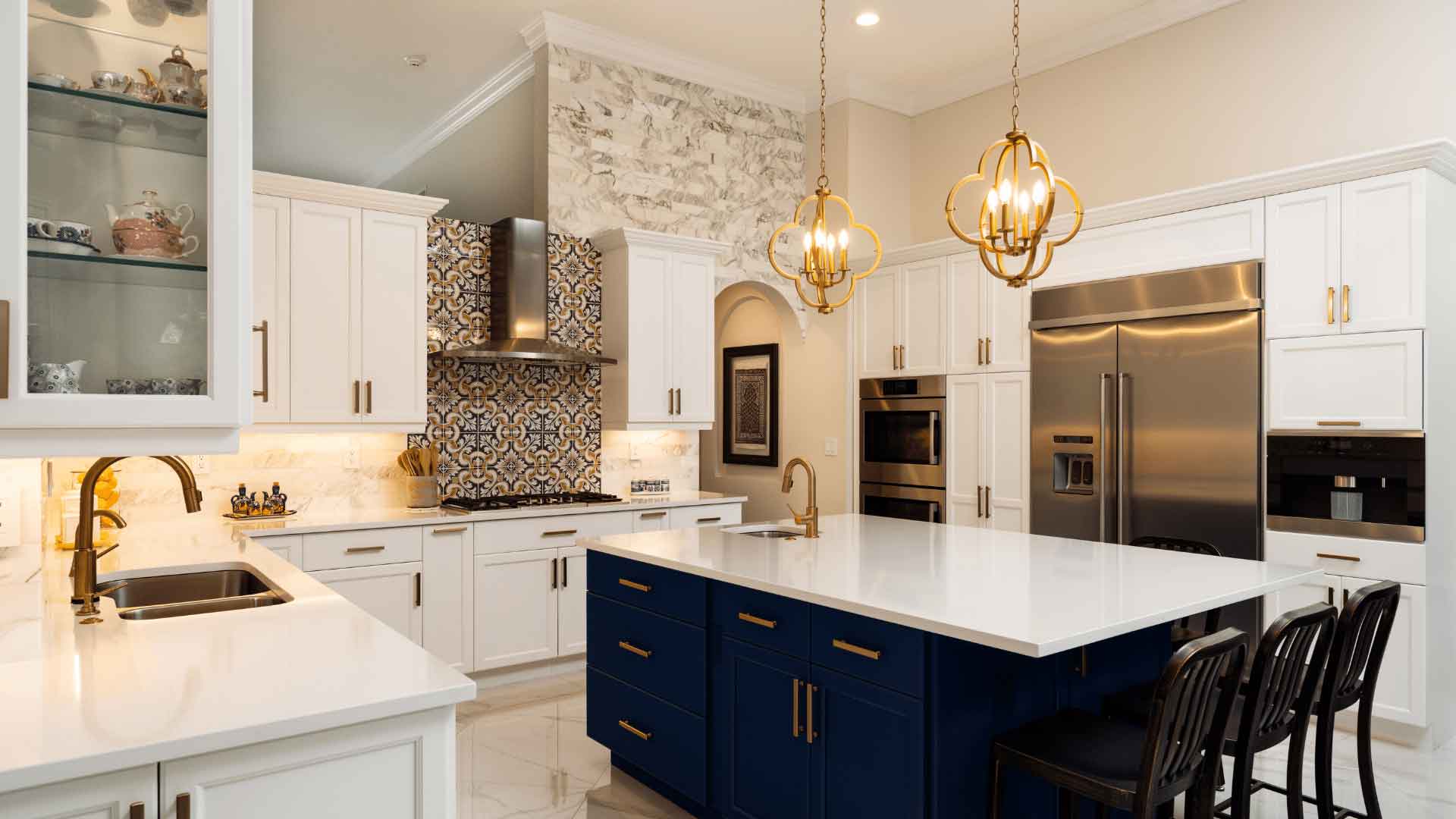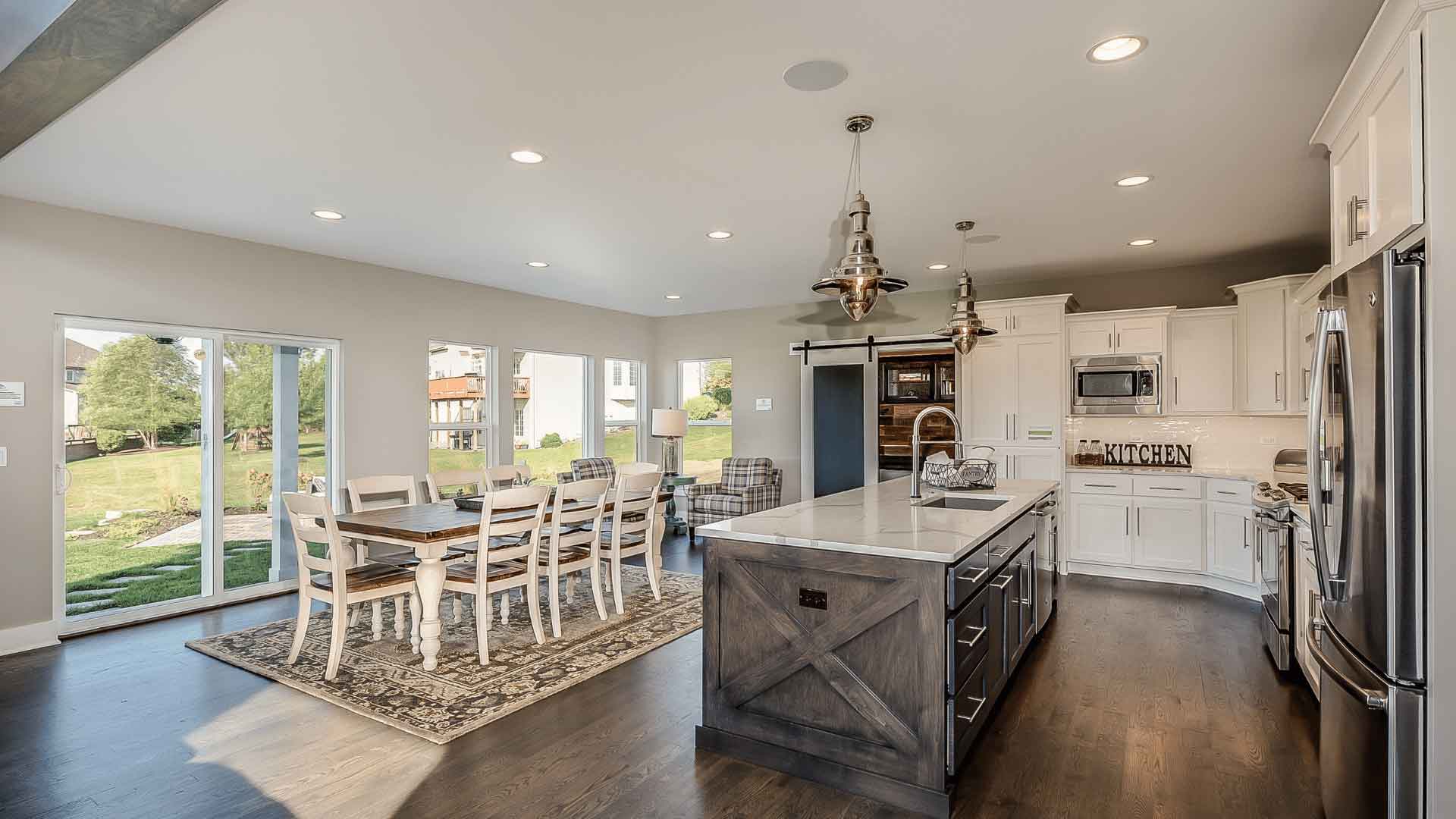Kitchen lighting is an important component of a successful kitchen remodel. Properly placed and selected fixtures can create atmosphere, set the mood, and improve visibility for food preparation. A well-lit kitchen may even be more inviting to guests than one with poor illumination.
This article will explore how proper lighting in your kitchen remodel can enhance its aesthetic appeal as well as provide improved functionality.
Lighting options have become increasingly diverse in recent years, making it easier for homeowners to find the perfect fixture for their own particular style and needs. From recessed lights to pendants or chandeliers, there are numerous possibilities that can add beauty and value to any kitchen space.
It is critical to consider all aspects of the design when selecting fixtures; from size, shape, color temperature and wattage – these factors help determine which type of light works best in each area of the room. Additionally, understanding energy efficiency ratings helps ensure you select products with low operating costs while still providing superior quality illumination.
Types Of Kitchen Lighting
Kitchen lighting is an essential component of a kitchen remodel. It can be used to create a comfortable atmosphere, as well as provide illumination for tasks such as food preparation and cooking.
There are two main types of lighting that should be considered when planning a kitchen remodel: task lighting and accent lighting.
Task lighting provides direct light on specific areas of the kitchen where it may be needed most, such as over the stove or sink area.
Accent lighting helps set the mood in the space by creating ambience with indirect light sources such as recessed wall lights or pendant fixtures.
When combined together, these two forms of lighting work together to create an inviting and functional living space in your home’s kitchen.
Ultimately, careful consideration of both task and accent lighting is necessary to achieve desired results during any kitchen renovation project.
Color Temperature
When it comes to kitchen remodeling, it is essential that the lighting be considered. Natural light and task lighting are two important factors when creating a functional space for everyday activities. The color temperature of the bulbs used in each type of lighting can have an impact on how comfortable people feel in the room.
Warmer tones create a cozy atmosphere while cooler tones can make a room seem more spacious and airy. As such, careful consideration should be given to what type of bulb will be most suitable for the desired ambiance.
The selection process begins with determining where natural light sources are located within the kitchen. If there is plenty of sunshine streaming through windows or other openings, then strategically placed task lights may not be necessary as they could interfere with the natural flow of sunlight throughout the day. On the other hand, if there isn’t much natural light available, then carefully chosen task lights become paramount in order to provide ample illumination for food preparation and eating areas without compromising comfort levels due to harsh shadows or glares from inadequate wattage.
Bulbs should also be selected based on their ability to produce bright but soft light that won’t distract from any decorative elements already present in the kitchen’s design scheme.
In sum, proper lighting plays an integral role in achieving a successful kitchen remodel project by providing both practicality and aesthetic appeal. When selecting fixtures and bulbs consider both natural light sources and adequate task lighting solutions that meet your needs while still maintaining overall harmony within your home’s interior design style.
Wattage Considerations
The wattage of the lighting system is a critical factor when considering kitchen remodel.
Incandescent bulbs are an outdated technology and with their high watts, they use more energy than fluorescent or LED bulbs while providing less illumination.
Fluorescent bulbs offer great light output but require a ballast to maintain optimal performance.
LED bulbs provide intense bright light with low wattage and have become increasingly popular for kitchen remodels due to their long lifespan and efficiency.
When selecting new lighting for your kitchen remodel, it’s important to consider the appropriate wattage of each bulb in order to achieve the desired brightness level without wasting energy.
Consider also that even though LEDs may be initially more expensive, over time you will save money on electricity bills because of the lower wattage requirement.
In addition, there are various types of LED lights available such as dimmable strips that can be installed beneath cabinets or shelves which allows you to control how much light is emitted in certain areas at any given moment.
Determining Fixture Placement
The proper placement of lighting fixtures is a critical element in any kitchen remodel. It should not be overlooked, as it can significantly affect the overall aesthetic and functionality of your space.
Task specific lighting is essential for activities such as food preparation or hobby work, while overhead illumination provides general brightness throughout the area. Layering different types of light sources allow you to customize their intensity according to your needs, ensuring that each task has its own level of visibility.
A well-lit kitchen creates an inviting environment that encourages activity and productivity. Additionally, lights with adjustable dimmers offer flexibility when entertaining guests or enjoying a meal at home.
With careful consideration given to fixture selection and placement along with appropriate wattage levels, you can create a beautiful and functional kitchen for years to come.
Energy Efficiency Ratings
When it comes to kitchen remodeling, proper lighting is essential for creating a pleasant atmosphere. In the previous section, we discussed techniques for determining fixture placement in order to get the best possible results from your lighting plan.
Now let’s take a look at how energy efficiency ratings and bulb selection can make a major difference in the success of your project.
Energy efficiency ratings are an important consideration when selecting light fixtures and bulbs for your kitchen remodel. Bulbs with higher wattage use more electricity than lower wattage bulbs; as such, they also produce more heat which may affect the temperature of your room.
To ensure you don’t end up wasting energy or using too much power, it’s important to select bulbs that have high energy efficiency ratings. This will help keep your electric bill low while still providing enough illumination throughout your space. Additionally, LED bulbs are becoming increasingly popular due to their long life span, excellent brightness levels and energy savings potential – all factors worth taking into account when making decisions about bulb selection for your kitchen remodel.
By choosing light fixtures carefully based on their placement within the space and selecting bulbs with appropriate energy efficiency ratings, you can create an inviting atmosphere in your newly renovated kitchen that won’t break the bank!
Aesthetics And Style
Aesthetics and style are two important components of a kitchen remodel, as they contribute to the overall atmosphere of the space. Achieving an aesthetically pleasing look requires attention to detail and accessorizing with layers of styles that complement each other.
Layering textures, colors, shapes, and materials can create interesting visual effects while adding character to your kitchen design.
When it comes to lighting, there are various aspects that need to be taken into consideration in order for you to properly illuminate your new kitchen. The right fixtures should fit the available area without overpowering or dominating the room’s atmosphere.
Different levels and types of lighting provide depth and interest throughout the entire space; task lights focused on specific areas such as countertops where food preparation is done, accent lights highlight artwork or architectural details around the walls, ambient light from overhead fixtures offering general illumination, etc.
All these elements work together so that you can have a beautiful kitchen design both day and night time.
Creating The Perfect Ambiance
Lighting plays a crucial role in creating the perfect ambiance for your kitchen.
A well-lit space encourages relaxation and sets the stage for intimate conversations, meals, or gatherings with friends and family.
The most effective lighting schemes include layered lighting that strategically blends both task lighting and ambient lighting to provide balance throughout the room.
Task lighting is especially important for completing tasks such as cooking, washing dishes, and cleaning countertops.
This can be achieved through track lights installed above the sink or stovetop, recessed downlights beneath cabinets pointing towards the countertop, pendant lights over an island or peninsula area of the kitchen, and under cabinet LED strips used to illuminate darker areas on the counters.
Layering these types of fixtures will create multiple layers of light while ensuring all tasks are illuminated properly without creating any hotspots or shadows.
On its own however it will not create enough ambience; this is where ambient lighting comes into play.
Conclusion
When it comes to designing the perfect kitchen, lighting is an important factor that should not be overlooked.
By considering different types of light fixtures and their placement in a space can create the desired ambiance for any remodel project while also providing practical benefits such as energy efficiency and proper illumination.
It is essential to take into account color temperature, wattage, fixture placement and aesthetics before selecting a final design choice.
Doing so will ensure that all areas of the kitchen are effectively lit without sacrificing style or functionality.
With careful consideration of these factors, one can easily achieve optimal lighting for their dream kitchen remodel.








